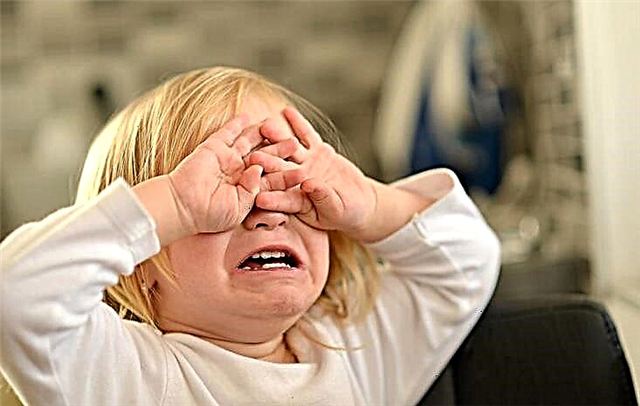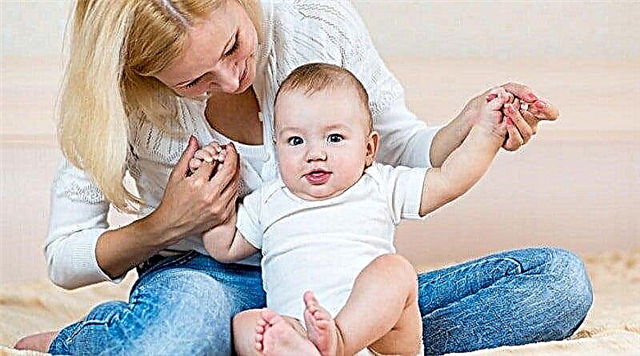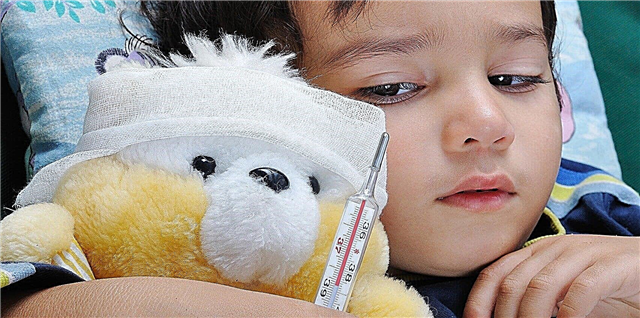A body temperature of 36 degrees can be the result of a variety of factors. Some of them are considered normal and do not require seeking medical help, while others can harm the baby's health if they are not eliminated in time. If the crumbs have even a minimal decrease in body temperature for a long time, parents should figure out why this is happening and, in case of urgent need, consult a pediatrician.

At low temperatures, the baby looks sleepy
Body temperature norms for children under 1 year old
In infants, thermoregulation processes continue to form up to one year. During this period of a baby's life, a slight fluctuation in body temperature (from 36 to 37.7) is considered normal, provided that the child is active, his appetite has not changed, his sleep is very sound, and there is no anxiety.
Thermometer readings will depend on the way the temperature is measured:
- armpit (main method) - 36.3-37.4 degrees;
- rectally (in the rectum) - 36.7-37.7 degrees;
- orally (in the mouth) - 36.5-37.3 degrees.
Every month, the thermoregulation center is improving its functioning, and the temperature indicators are gradually approaching the generally accepted norms.

Temperature can be measured by oral method
Possible causes of low body temperature
In infants, the ability to thermoregulate passes the stage of formation: the baby can easily overheat or overcool. A body temperature of 36 degrees and below can be in newborn babies, as well as in infants with low weight indicators. Also, premature babies may suffer from heat loss and low body temperature.
Also, a child's temperature of 36 degrees may be the result of:
- Hypothermia;
- Being outdoors in wet or damp clothes;
- Improper use of vasoconstrictor drops.
It happens that the causes of hypothermia are certain problems in the work of a small organism, namely:
- Chronic diseases;
- Iron-deficiency anemia;
- Weakening of immunity;
- Avitaminosis;
- Prolonged cold;
- Poisoning;
- Malignant neoplasms.
Additional Information. Do not worry if the baby had a low temperature only at night, and in the morning it stabilized. This may mean that the child is very tired for the whole day, and he is so tired.

Measuring temperature with a thermometer
Very often, the reasons for low body temperature are physiological, psychological factors and features of heat regulation, which is characteristic of a particular age. Also, one should not exclude the possibility of the development of diseases that provoked such changes in the child's body.
Unformed thermoregulation in infants
Thermoregulation in infants under one year of age goes through the stage of formation, which means that this factor should not be attributed to an unhealthy state. The baby can easily both overheat and overcool. Even with slight hypothermia, a decrease in body temperature may occur. This is especially true for babies in the first 3 months of life. There is no need to worry if, with a thermometer reading of 34.9-36 ° C, the baby is active and cheerful, sleeps soundly and eats well.
Decrease in temperature for physiological reasons
If recently the child has suffered any infection, then the mark on the thermometer at 36 degrees and even 35.5 is considered a normal condition. Since the baby has spent a lot of energy recovering from an illness, his immune system is in a weakened state. A weakened body that has undergone any infectious disease cannot control thermoregulation for several days. In addition, a temperature of 36 in infants may occur due to an overdose of vasoconstrictor drops.
Note! Vasoconstrictors for the nose can lead not only to a decrease in temperature, but also to dizziness and fainting. Before using the drug for a child, you should always carefully study the instructions. Failure to follow the rules of admission can lead to an ambulance call.

At low temperatures, the child is tired and sleeps a lot
Development of internal diseases
The child's body temperature is 36, what does this mean - sometimes such thermometer readings indicate more serious health problems than simple hypothermia. These include:
- Oxygen starvation of the brain;
- Diseases of the blood;
- Anaphylactic shock;
- Micro hemorrhages in the brain;
- Diseases of the bronchi and lungs;
- Cardiovascular insufficiency;
- Chronic liver disease;
- Renal failure, decreased functioning of the adrenal cortex;
- Hypoglycemia;
- Hypothyroidism;
- Mitral valve collapse.
In the presence of all these states, heat transfer is significantly higher than heat production.
How dangerous is temperature 36 in children
In infants, a body temperature of 36 3 and below may be the result of diseases of the broncho-pulmonary system, problems with the adrenal glands and thyroid gland, as well as a malfunction of the hormonal system. If the crumbs' body temperature very often drops to 36 degrees, this indicates that he has a weakened immune system, or there is a pathology that can provoke hypothermia. In any case, it is worth contacting a pediatrician who will help to find out the cause and, if necessary, prescribe treatment.

Temperature readings below normal
How to help your child with hypothermia at home
With a decrease in body temperature, the baby can become lethargic, drowsy or moody. To improve his condition, it is recommended to apply the following actions:
- It is good to insulate the baby. Baby clothes, diapers and bed linen must only be dry.
- The newborn should be offered breast milk. If the baby is already more than six months old, it is necessary to give him warm tea, compote or water.
- Adjust the temperature in the room, it should be at least 25 degrees.
- Stick to proper sleep patterns. Until one year old, the child's body needs at least 14 hours of sleep a day.
- Reduce the baby's motor activity. Active movements can provoke pain and disrupt the heart rhythm.
- Massage and rub the body. In this case, the movements should be as gentle and slow as possible. Rubbing should be done with a sponge made of natural fabric.
If, after completing this set of measures, the body temperature stubbornly does not rise, then the reason is not banal hypothermia, and it is necessary to seek help from a doctor as soon as possible.
Attention! In no case should you use a heating pad or similar device, since there is a high risk of burns on the delicate skin of the child.

With hypothermia, the child is given warm drinks
When medical attention is needed
An urgent call to a doctor at home is necessary in such situations:
- With severe frostbite and hypothermia. In this case, the child will be lethargic, sleepy, cold and pale, the thermometer will be below 36 degrees. With frostbite, when the baby is warm, his skin becomes red and swollen.
- The low temperature (within 35˚C) lasts two days, or even more than three to four days. In this case, you may need to donate blood for analysis and undergo an EKG.
- A drop in temperature as a reaction to vaccination. With a decrease in body temperature after the vaccination (36-35.5 degrees), you should consult a pediatrician about this. Although this situation is not quite common, you should not worry too much. The doctor will most likely advise you to watch the warmth of your baby's hands and feet. If the appetite is not disturbed, and the sleep is sound, and there are no disturbances in the behavior of the baby, there is no need to take medication.
- In case of poisoning. A baby who has been poisoned by poisonous volatile substances may develop hypothermia, severe chills, vomiting, pallor and dizziness. In this condition, urgent medical attention is needed.
- Poor general health. With excessive lethargy, drowsiness, vomiting, headaches, a condition close to fainting, loss of consciousness - dangerous symptoms requiring urgent medical attention.
In infants up to one year old, the body temperature ranges from 36.2-37.7 degrees. This is considered a completely normal state, since the thermoregulation system of the crumbs is still in the process of formation. It is worth sounding the alarm when the thermometer is below 36, especially if there is drowsiness, moodiness, runny nose, cough, lethargy.



